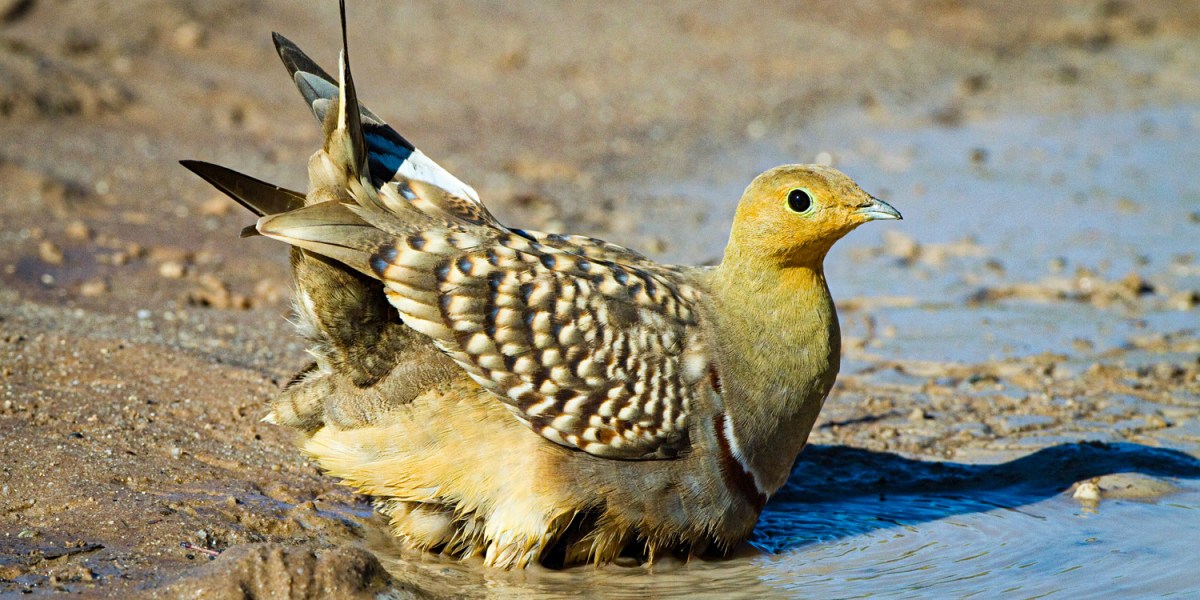A study that really holds water

Using scanning electron microscopy, micro-computed tomography, and video imaging, the researchers discovered that sandgrouse feathers have an unusual design. Most feathers have a central shaft from which smaller barbs extend, and then smaller barbules extending from those. In the inner zone of a sandgrouse feather, however, the barbules have a helically coiled structure close to their base and then a straight extension. In the outer zone, the barbules are simply straight. Both parts lack the grooves and hooks that hold the flat vane of contour feathers together in most birds.
When the feathers get wet, the coils unwind and rotate to be perpendicular to the vane, producing a dense forest of fibers that can hold water through capillary action. At the same time, the barbules in the outer zone curl inward, helping to hold the water in.
While previous work had suggested that surface tension was key, “what we did was make measurements of the dimensions and do some calculations to show that that’s what is actually happening,” Gibson says. Her group demonstrated that the varying stiffnesses of the different feather parts play a crucial role.
The study was mostly driven by curiosity, Gibson says, but it might lead to useful applications. For example, some adaptation of this feather structure might be incorporated into the desert nets that are used to collect water from fog and dew.





